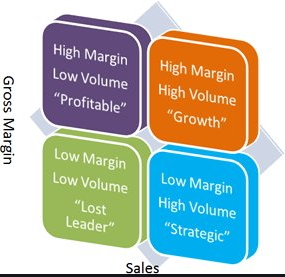Margins are often considered as being the most important KPI in stock control.

Like everything, it gets more complicated once you get into it as different shops tend to have different needs and requirements. So we have a few different types of margins, actually, and it is helpful to run through them.
Gross profit margin
This is the difference between profit before expenses such as salaries, rent, advertising etc., you earned and the cost of goods sold, generally expressed as a percentage of revenue.
= 1 - (cost of the wholesale price) /(revenue)
for example, you buy the goods for $35, you sell them for $60, so it becomes
1- 35/60 = .42
Which as expressed as a percentage: 0.42 * 100 = 42%.
This is how you calculate the gross profit margin
Your suppliers can give you this figure, and I strongly suggest that you ask for the gross profit margin, not the markup, which some suppliers will provide you as it inflates their profit figure.
Actual margins
Is the actual margin with discounts included that you are getting? In the real world, often, what we sell is not what the supplier recommended prices are, and as I discussed already here, click here for more details.
Net profit margin
Is much harder to determine and involves you putting into the costs such items as salaries, rent, advertising etc., into the costs. The problem a point of sale software has is that much of this information is unavailable. Your accountant should be able to give you an approximate figure which will be in the form of
Your cost for the shop = factor x (cost of wholesale goods) + (fixed fee)
As the fixed fee is minimal for each item sold, most people multiply the cost of wholesale goods by the factor. So say the accountant said the factor is 18%, the actual margin is, for example, 35% for the item above, then your net profit margin for this item is 35%-18% = 17%
This is an instrumental figure to keep in the back of your head, as if you know an item has a margin of 15%, then if your is 18% which is often what it is in retail, you are losing money on that item. Note, of course, if you have lotto, you may need a few factors.
There is, of course, no definite answer to what is a good margin. It depends on your business, so I suggest you check with your respective industry and the ATO benchmarking for an idea of what margins you should be getting.


